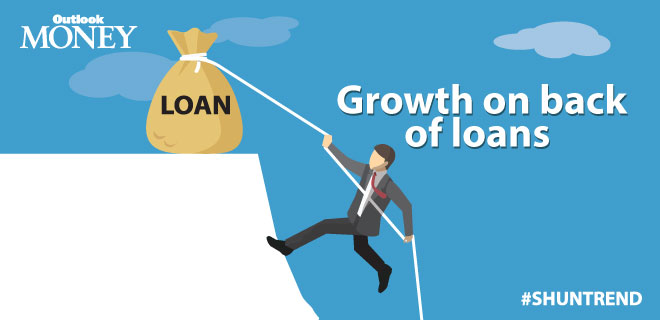Demonetisation effect: Changing credit business
The aftermath of demonetisation can be felt in the disruption of consumption supply patterns

Much has been said and debated about the implications of demonetisation on consumption, inflation, interest rates, prices and the economy. But how will demonetisation impact growth of retail credit? Will the new groups of consumers entering the formal banking system lead to higher credit growth? Or would the immediate drop in economic activity lead to slowdown in the credit growth?
Cash-less to less-income
The immediate impact of demonetisation is a disruption of consumption-supply patterns and stress in trade channels. Not only is the average consumer holding back on spending, the average supplier and intermediary who were heavily dependent on cash, now have less cash to invest. Many SMEs may go into temporary distress as they find that cash heavy delivery and commercial models are no longer financially viable. RBI, in its latest monetary policy has revised the FY2017 GDP growth forecast to 7.1 per cent from 7.6 per cent, a decrease of 50 bps. Some economists are lowering the forecast by as much as 2 per cent. Whether the impact is this severe, one consequence is certain— lower economic activity will translate into lower incomes in short term.
Due to interdependencies, the impact will not be limited to a few cash heavy segments of the economy (like real estate) but may have a domino effect on the consumption and incomes of even cash light segments of the economy.
Consumers will hold back on some categories of discretionary and impulse consumption. There is also a potential risk of increased credit stress in some segments like loan against property, SME loans or MFI loans which have stronger link to cash-intensive parts of the economy.
As a credit bureau, Equifax receives actual performance data from all lenders; so we will be able to see the impact of demonetisation on lending levels and delinquency rates. However, this data submission for November will be complete over the coming few weeks. At this point our observations are therefore based on submissions till mid-December, along with on-the-ground interactions with officials of various industries. We see some evidence of worsening delinquencies and slowdown in new business underwriting. In the microfinance industry, disbursements, borrower earnings and repayments are all in cash, there are reports of collections dropping by 20-50 per cent.
Increase in delinquency ratios by 10 per cent or more are also being reported from commercial vehicle segment, where disbursements may be non-cash, but borrowers’ earnings are often in cash. Also, certain loan segments where EMIs were repaid in cash have seen a similar trend. Ultimately, all this will
slow retail credit uptake in the near term. A rule of thumb, generally used, that banking sector credit growth for market is 2.5x of GDP growth can act as yardstick for quantifying this slowdown.
Obviously, the government and central bank is cognizant of this short term dynamic. Reserve Bank of India’s recent monetary policy intervention, though short of rate cut, removed the additional CRR requirements, paving the path for softening of interest rates.
In the medium term, it is expected that economy will be remonetised back to original levels at 12 per cent of GDP or at the new desired cash levels of around 8 per cent of GDP. This coupled with adoption of the digital payment channels and lowering of tax evasion, broadening of tax payer base and potential rationalisation of income tax rates will lead to some return of retail credit growth.
Digitisation to bankisation to creditisation
Digitisation and cashlessness will clearly increase the banked population in the economy. It will also lead to higher banking transaction intensity and revival of dormant bank accounts in the existing banked population. But does it automatically imply that digitisation will lead to higher retail credit activity? Perhaps it does or it does not. From my experience, increase in creditisation happens in one of three ways:
Additional lending to existing borrowers who already have loans or cards from the organised banking industry. (As a reader of this article, most probably, you belong in this segment.)
New lending to new to-credit customers. Typically these borrowers ‘look like’ what category a customers used to be before they established borrowing relationships. They are young people starting work, they have banking relationships, income credits into their banks, etc.
New lending to new-to credit customers who don’t look like the above two types of customers. These tend to be underserved by the existing organised banking industry.
One in five borrowers in India today started their borrowing relationships within the last 24 months. Almost all of these new borrowers came from category B. The lenders saw their ability to service loans as evidenced by their income credits and decided to offer them loans or cards.
These lenders have few ways to serve the needs of prospective borrowers belonging to category C. (Group lending models like the microfinance industry are notable exceptions and provide an incredibly valuable service to this segment of customers, and in turn, to the country.)
By virtue of digitisation, the customers in category C will now become visible to the formal banking system, thus making them eligible for new credit. With the category C customer more tightly integrated with the formal banking system and banks having a savings account relationship to estimate (income) and evaluate, they will be more amenable to extending credit to customers. And that in turn would help the hitherto unbanked, un-credited population to gain credit.
Just to be clear, digitisation, per se, does not create any new credit history or credit information. Only when the digitised customer is creditised, does he/she become visible to the credit bureaus.
How retail credit growth eventually turns out is dependent on complex interplay of regulatory, government interventions, consumer adoption of digitised channels and the banking sector’s ingenuity in converting these consumers to credit active. If I had to give my opinion on the outcome of this complex interplay, I would say, I’m hugely optimistic.
Look out for
- In medium term, remonetization back to original levels at 12 per cent of GDP is expected.
- Higher banking transaction intensity, revival of dormant bank accounts.
Manish Sinha is CEO, Equifax India









